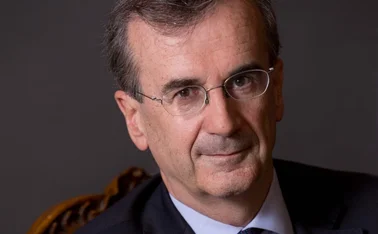
Flurry of new central bank heads could continue into 2016
The past three months have brought 10 new central bank governors and a Fed president

The turn of the year brought a flurry of new central bank heads, with 10 new appointees taking office since November and an eleventh set to start in February. While the pace is likely to slow in coming months, more vacancies could open up later in the year.
Data from the Central Bank Directory 2016 shows 18 new governors were appointed in the year to October 2015 – a dip from 27 in the previous year. The inclusion of Federal Reserve Bank presidents pushes these numbers to 20 (Dallas, Philadelphia) and 28 (Cleveland) respectively.
This period of stability was followed by a storm of new appointments, however, beginning with the National Bank of Kazakhstan, at the start of November. Kairat Kelimbetov was removed from office and replaced with Daniyar Akishev, a former deputy governor.
Since then, the top job has changed hands at central banks in Argentina, the Bahamas, Bhutan, the East Caribbean, France, Haiti, Ireland, Palestine, Trinidad and Tobago, as well as the Minneapolis Fed.
All but one of the appointees has taken office, with Timothy Antoine only succeeding Dwight Venner as Eastern Caribbean Central Bank governor on February 1. Venner retired in November after 26 years in the job.
Amidst all the changes, three of which were brought about by government dismissals, one high-profile central banker has kept their job. Agustín Carstens began a second six-year term as Bank of Mexico governor on January 1.
The Directory shows the terms of another 21 governors were due to expire this year, including those in Australia, India and Malaysia. Glenn Stevens and Zeti Akhtar Aziz are expected to step down, while it is unclear whether Raghuram Rajan will remain in his post.
Officially, the terms of governors in Cambodia, Chile, the Czech Republic, Georgia, Guinea, Liberia, Libya, Lithuania, Malta, Moldova, Mozambique, Papua New Guinea, Peru, Poland, Qatar, Turkey, Uganda and Uzbekistan will also expire.
A question mark remains over some, however, including the National Bank of Moldova, where governor Dorin Dragutanu offered his resignation in September, alongside first deputy governor Marin Molosag. Dragutanu is still listed on the central bank website, and a spokesperson did not respond to a request for comment on the role.
In the US, the terms of the 12 Federal Reserve Bank presidents will expire at the end of February – they do so concurrently, every five years – but this does not necessarily herald change. Presidents frequently come and go between the set term dates.
There is already one vacancy open in the central banking community. According to the Central Bank of the Republic of San Marino website, no-one has taken over from Renato Clarizia, who stood down as chairman on August 1, 2015. Whoever takes the job will be one new appointment among many in 2016.
Only users who have a paid subscription or are part of a corporate subscription are able to print or copy content.
To access these options, along with all other subscription benefits, please contact info@centralbanking.com or view our subscription options here: http://subscriptions.centralbanking.com/subscribe
You are currently unable to print this content. Please contact info@centralbanking.com to find out more.
You are currently unable to copy this content. Please contact info@centralbanking.com to find out more.
Copyright Infopro Digital Limited. All rights reserved.
You may share this content using our article tools. Printing this content is for the sole use of the Authorised User (named subscriber), as outlined in our terms and conditions - https://www.infopro-insight.com/terms-conditions/insight-subscriptions/
If you would like to purchase additional rights please email info@centralbanking.com
Copyright Infopro Digital Limited. All rights reserved.
You may share this content using our article tools. Copying this content is for the sole use of the Authorised User (named subscriber), as outlined in our terms and conditions - https://www.infopro-insight.com/terms-conditions/insight-subscriptions/
If you would like to purchase additional rights please email info@centralbanking.com




